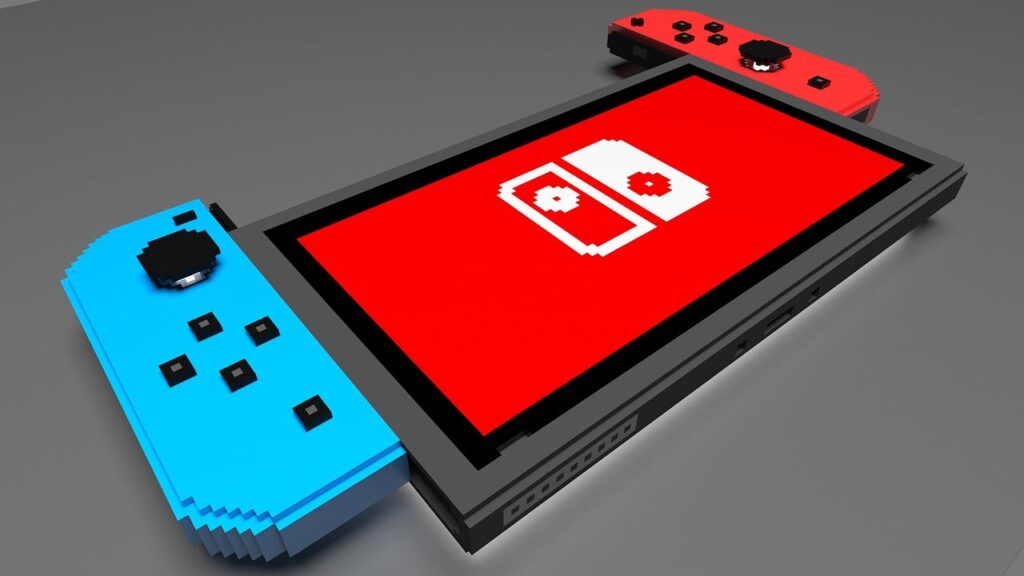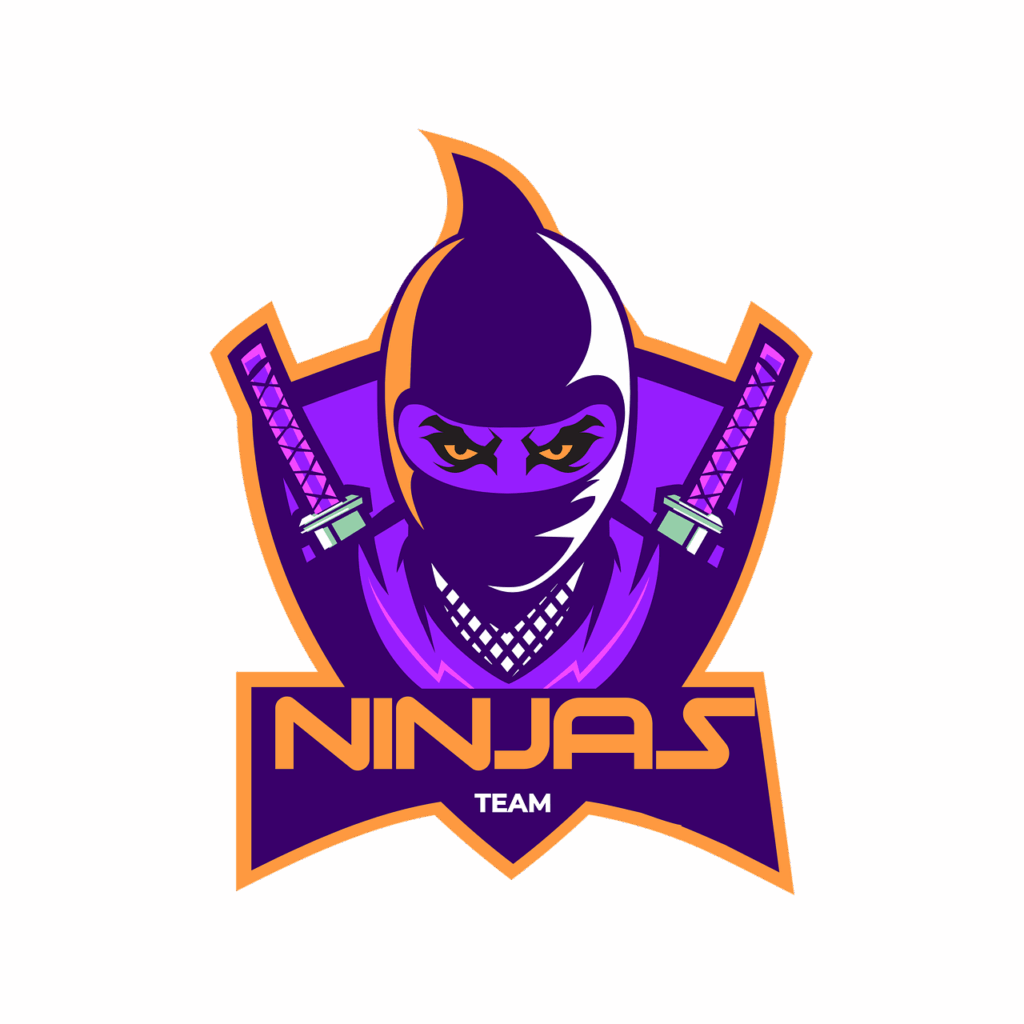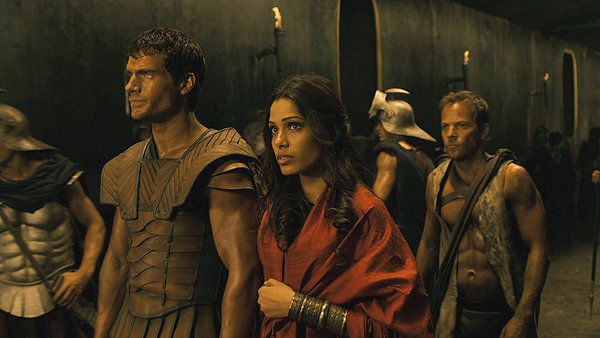
For decades, the name Rare has been synonymous with innovation, groundbreaking technology, and a distinct, often quirky, brand of game design that has carved an indelible mark on the gaming landscape. Like a finely-tuned, high-performance engine, Rare’s output consistently pushed boundaries, delivering experiences that not only captivated players but also frequently redefined genres and expectations. From their humble beginnings to becoming a titan of the Nintendo 64 era, this British studio has always dared to be different, delivering digital horsepower that left competitors in the dust.
Behind every iconic title was a relentless pursuit of excellence and a willingness to experiment, often against conventional wisdom. Rare didn’t just make games; they crafted worlds, developed characters, and engineered mechanics that resonated deeply with players, fostering a loyal fanbase that still champions their classic creations. Their journey is a testament to creative vision, technical ambition, and a palpable passion for making truly unforgettable interactive experiences.
So, buckle up, because we’re about to take a deep dive into the garage of Rare’s greatest hits. We’re talking about the games that weren’t just good for their time, but whose innovative spirits and sheer quality still roar with authority, demanding our respect on the digital highway of gaming history. These are the engines that kept generations of gamers glued to their screens, marveling at the sheer ingenuity on display. Let’s start this epic journey into Rare’s incredible legacy.

1. **The Genesis of Greatness: From Ultimate to Rare**The story of Rare, the video game developer, isn’t just a tale of success; it’s a testament to audacious ambition and a keen eye for the future. Founded in 1985 by brothers Tim and Chris Stamper, Rare evolved from their earlier, highly successful venture, Ultimate Play the Game. Ultimate had carved out a formidable reputation in the UK, but the Stampers, with foresight typical of true pioneers, recognized that their primary platform, the ZX Spectrum home computer, was a “dead end” for global growth.
Their gaze instead fell upon an imported console from Japan: Nintendo’s Famicom. They saw not just a console, but a global market, a more sophisticated architecture than the Spectrum, and, crucially, cartridges with no load times – a significant performance advantage. This realization spurred Rare’s establishment, with the bold initial goal of reverse-engineering the Famicom and investigating its game codes. Nintendo, initially skeptical of anyone being able to reverse-engineer their console, was reportedly “impressed with their efforts” when shown tech demos by the Ultimate Play the Game team.
This impressive display led to an unprecedented deal: Nintendo granted the Ultimate Play the Game team an “unlimited budget” to develop games for the Famicom, later released in North America and Europe as the Nintendo Entertainment System (NES). With this incredible financial backing, Rare moved to Twycross, establishing their headquarters in a Manor Farmhouse and embarking on a prolific period. Their mission, as articulated by Tim Stamper, was “to bring products that you wouldn’t see for six to eight years and make it available as soon as possible,” a declaration of intent for rapid innovation.
Over the next five years, Rare developed an astonishing sixty games, forty-seven of which were for the NES. This era saw the creation of new and original intellectual properties, including Slalom, a downhill skiing game that marked their first project, and R.C. Pro-Am, a racing game that infused vehicular combat elements, proving their versatility and capacity for original thought right from the starting line. Their early output, while prolific, laid the essential groundwork for the legendary quality that would follow, showcasing a studio unafraid to tackle any genre.
2. **Battletoads: The Legend of Unyielding Challenge**Among Rare’s early creations, one title stands out not just for its unique character but for its legendary, often brutal, difficulty: Battletoads. Released in 1991, this beat ’em up was clearly inspired by the Teenage Mutant Ninja Turtles franchise, but it quickly established its own distinct identity. Players were plunged into a vibrant, often surreal, world, controlling anthropomorphic toads in a quest filled with platforming, racing, and, most famously, unforgiving combat.
Battletoads became renowned for its “extreme difficulty,” a trait that, rather than deterring players, cemented its cult status. It was a game that tested the limits of patience and skill, with notorious sections like the Turbo Tunnel becoming rites of passage for a generation of gamers. The game’s success was undeniable, prompting publisher Tradewest to not only publish multiple ports across various systems, including Sega’s Mega Drive/Genesis, but also to task Rare with developing sequels.
The franchise expanded rapidly in 1993, with titles such as Battletoads / Double Dragon: The Ultimate Team, a crossover that brought together two iconic beat ’em up franchises, and Battletoads in Ragnarok’s World. Rare even took the amphibious heroes to the arcade in 1994, further solidifying their place in the pantheon of challenging, yet incredibly rewarding, video games. The sheer audacity of its design and the uncompromising challenge it offered are why Battletoads still commands a special, albeit masochistic, respect among enthusiasts today.
3. **Donkey Kong Country: Pre-rendering the Future**If any game truly marked Rare’s ascension to global prominence and cemented their “second-party” developer status with Nintendo, it was Donkey Kong Country. In the early 1990s, with the Super Nintendo Entertainment System (SNES) on the horizon, Rare made a pivotal investment: they poured their significant NES profits into “expensive Silicon Graphics workstations” to create three-dimensional models. This bold move positioned Rare as “the most technologically advanced developer in the UK,” and a serious player on the international stage.
The results of this investment were nothing short of revolutionary. Rare used the SGI graphics to produce stunning 3D models and then pre-rendered these graphics onto the SNES cartridge, a technique they dubbed “Advanced Computer Modelling.” They presented a boxing game demo to Nintendo, and the sheer visual fidelity of these 3D graphics “impressed Nintendo,” leading them to buy a 25% stake in the company in 1994, which eventually grew to 49%. This made Rare a key developer for Nintendo, now selling their games under the trademark name “Rareware.”
Nintendo, recognizing Rare’s genius, offered them access to their entire catalog of characters for a new 3D CGI game. The Stampers famously chose Donkey Kong. The development of Donkey Kong Country was an intense 18-month cycle, with a team of just 20 people, who even visited Twycross Zoo to observe and videotape real gorillas for inspiration. The effort paid off handsomely: the game was a “critical success,” lauded for its “highly advanced visuals and artstyle,” and became the “third best-selling game in the SNES library,” selling over nine million copies worldwide.
Donkey Kong Country wasn’t just a technical marvel; it was a vibrant, engaging platformer that breathed new life into an iconic Nintendo character. Its success led to “several Game of the Year honours” and spawned two equally acclaimed sequels, Donkey Kong Country 2: Diddy’s Kong Quest and Donkey Kong Country 3: Dixie Kong’s Double Trouble!, along with handheld spin-offs. This era showcased Rare’s ability to not only innovate technologically but also to craft compelling gameplay experiences that resonated universally, setting a new benchmark for console graphics and gameplay.
4. **Killer Instinct: Arcade Brawler, Console Champion**While Donkey Kong Country redefined 2D platforming visuals, Rare simultaneously demonstrated their prowess in a completely different arena: the competitive world of arcade fighting games. Killer Instinct, developed on Rare’s “own custom-built arcade machine,” was a powerhouse of graphical flair and combo-heavy gameplay that screamed attitude. It stood out with its dazzling pre-rendered character models and backgrounds, reminiscent of Donkey Kong Country’s visual style, but applied to a brutal, over-the-top brawler.
Originally, Killer Instinct was slated for Nintendo’s upcoming 64-bit system, the Nintendo 64. However, the game was ultimately “forced to release… for the 16-bit SNES system,” a testament to its raw appeal that it could still impress despite a necessary graphical downgrade to fit the platform. Even with these concessions, the game was a commercial success, selling “3.2 million copies,” a remarkable achievement for a fighting game on a 16-bit console late in its lifecycle. It proved Rare’s ability to create compelling experiences that translated across different gaming formats.
The game’s impact was undeniable, leading to a sequel, Killer Instinct 2, which also made its way to the Nintendo 64 as Killer Instinct Gold. While the console port again “suffered from a graphical downgrade” due to compression technology, the core appeal of its unique characters, satisfying combos, and explosive “Ultra Combos” remained intact. Killer Instinct showcased Rare’s versatility and their capacity to craft a distinct, engaging identity within an established genre, proving they could throw a knockout punch with the best of them.

5. **GoldenEye 007: Redefining the First-Person Shooter**Then came a game that wasn’t just good; it was a seismic event that reshaped an entire genre on consoles. GoldenEye 007, based on the James Bond film, started life under an “inexperienced team” led by Martin Hollis. What began as an on-rails shooter, inspired by Sega’s Virtua Cop, rapidly evolved into something far more ambitious: a “free-roaming first-person shooter.” This pivot was a stroke of genius, and Rare infused it with groundbreaking elements that were revolutionary for console gaming.
“New elements, such as stealth, headshot mechanics and reloading, were introduced,” transforming the traditional run-and-gun formula into a more strategic and immersive experience. But the real game-changer, added “by the end of its development,” was the split-screen multiplayer. This feature alone cemented GoldenEye 007 as a social phenomenon, inspiring countless late-night, four-player skirmishes that defined a generation’s multiplayer experience. It was visceral, competitive, and endlessly replayable, turning living rooms into battlegrounds.
Despite being released “two years after the release of the film,” the game was an immediate and massive “critical praise and received numerous awards.” It was a commercial juggernaut, remaining “one of the best-selling games for two years, and sold more than eight million units worldwide.” GoldenEye 007 wasn’t just a great game; it was a revelation, proving that sophisticated, tactical first-person shooters could not only thrive but dominate on consoles. It set the blueprint for countless future FPS titles and its impact still reverberates today, making it a true performance legend.

6. **Banjo-Kazooie: The Quintessential 3D Platformer**After the groundbreaking success of GoldenEye 007, Rare turned its attention back to the burgeoning 3D platforming genre, aiming for another masterpiece. What started as “Dream: Land of Giants,” featuring a young boy named Edison and pirates, underwent a significant transformation. The protagonist was eventually replaced by an endearing bear named Banjo, and his feathered companion, Kazooie the bird, saw her role expanded. This duo, reportedly inspired by “characters from Disney films,” was designed to “appeal to a younger audience” while retaining Rare’s signature depth and charm.
Banjo-Kazooie, released in June 1998, arrived to immediate “critical acclaim.” It wasn’t just another 3D platformer; it was a masterclass in world design, character interaction, and rewarding exploration. The game’s vibrant worlds were meticulously crafted, filled with memorable characters, ingenious puzzles, and a perfect blend of platforming challenges and collectible hunts. The synergy between Banjo’s strength and Kazooie’s aerial abilities created a dynamic and versatile control scheme that felt both intuitive and innovative.
More than just its mechanics, Banjo-Kazooie possessed an undeniable charm, fueled by witty dialogue, a memorable cast of villains and allies, and a truly iconic soundtrack composed by Grant Kirkhope. Every note contributed to the game’s unique atmosphere, from the playful melodies of Spiral Mountain to the spooky tunes of Mad Monster Mansion. Its combination of technical polish, engaging gameplay, and unparalleled personality ensured its place as one of the N64’s brightest stars.
The game’s success paved the way for a highly anticipated sequel, Banjo-Tooie, released in 2000, which built upon the foundation of the original with even larger worlds and more complex mechanics. Banjo-Kazooie stands as a towering achievement in 3D platforming, a testament to Rare’s ability to craft experiences that were not just mechanically sound but also brimming with soul and character. It continues to be celebrated as a benchmark for the genre, a perfectly tuned engine of pure joy and adventure.

7. **Perfect Dark: Beyond Bond, Beyond Expectations**Following the genre-defining triumph of GoldenEye 007, the pressure was on for Rare to deliver another console FPS masterpiece. What emerged was Perfect Dark, a title that initially harbored ambitions as a “Tomorrow Never Dies” tie-in, only to evolve into a wholly original intellectual property. This audacious move set the stage for Joanna Dark, a new heroine who was poised to carve her own legend in the burgeoning world of console first-person shooters. It was a clear statement that Rare wasn’t content to simply rest on past glories.
The development journey for Perfect Dark, however, was far from smooth, echoing the complexities of any high-performance machine in its tuning stages. Key figures, including project lead Martin Hollis, departed during its creation, leading to a shift in vision and numerous employees forming new studios. While the initial emphasis on lighting was diminished by a new team, the core ambition to deliver a sophisticated, engaging shooter remained intact. It’s a testament to Rare’s deep pool of talent that even with these challenges, other concurrent projects like Jet Force Gemini and Donkey Kong 64 continued to thrive.
Despite the internal turbulence, Perfect Dark resurfaced in 2000 to “critical acclaim,” proving that Rare’s engine of innovation was still firing on all cylinders. It built upon the foundation of its illustrious predecessor, introducing new mechanics and a captivating, futuristic storyline that held players rapt. The game successfully carved out its own identity, selling approximately “2 million copies” and demonstrating Rare’s unparalleled ability to dominate the N64’s console FPS landscape right until the very end. Its impact was undeniable, cementing Joanna Dark as an icon and pushing the boundaries of what was expected from a console shooter.
Product on Amazon: GoldenEye 007 (Boss Fight Books)
Binding: Kindle Edition Product Group: Digital Ebook Purchas
Price: 7.99 USD
Rating: 4.4 Total reviews: 16
Shopping on Amazon >>

8. **Conker’s Bad Fur Day: The Unlikely Anti-Hero**Just when players thought they had Rare’s whimsical charm all figured out, the studio unleashed Conker’s Bad Fur Day – a game that gleefully flipped expectations on their head. What began as “Conker’s Quest,” intended to be a family-friendly adventure similar to Banjo-Kazooie, was utterly transformed. Responding to criticisms of being “too family-friendly,” Rare decided to pivot, creating an experience that was unapologetically mature, irreverent, and utterly unique. It was a bold, almost reckless, maneuver for the normally wholesome Nintendo platform.
This radical reimagining saw Conker the Squirrel delve headfirst into a world brimming with “violence, profanity and scatological humour.” Far from the bright, innocent landscapes of Spiral Mountain, Conker’s adventure plunged players into a hilariously dark and often shocking odyssey. This daring departure showcased Rare’s incredible versatility and their willingness to experiment with tone and content, proving they were not bound by perceived brand identities. The game earned “positive reviews from critics” who praised its audacious humor and inventive gameplay.
Yet, its daring nature came with a price. Released at the very tail end of the Nintendo 64’s lifecycle, and notably “not actively promoted by Nintendo due to its crude content,” Conker’s Bad Fur Day became a commercial failure. Despite this, its cult status has only grown over time, cherished by fans for its razor-sharp wit, unforgettable characters, and truly adult themes in an era dominated by family-friendly mascots. Conker remains a testament to Rare’s rebellious spirit and their capacity for crafting truly unforgettable, albeit niche, experiences.
9. **Star Fox Adventures: A Farewell to Nintendo’s Console Realm**As the gaming world prepared for a new generation of consoles, Rare delivered a surprising swan song for its Nintendo partnership with Star Fox Adventures. This ambitious title began life as “Dinosaur Planet” for the Nintendo 64, an original concept that showcased Rare’s continued world-building prowess. However, the legendary Shigeru Miyamoto himself stepped in, suggesting a transformative redesign to incorporate the beloved Star Fox characters and shift the game to Nintendo’s upcoming GameCube console. It was a fascinating fusion of two creative powerhouses.
The resulting game marked a significant departure for the Star Fox franchise, boldly venturing into “ground-based, open world exploration” rather than its signature rail-shooter gameplay. Rare infused the familiar Star Fox universe with action-adventure elements and intricate puzzle-solving, delivering an experience that felt both fresh and deeply engaging. This experimental approach demonstrated Rare’s adaptability and their ability to reinvigorate established franchises with their distinctive design philosophy. It was a true testament to their narrative and environmental artistry.
Upon its launch in 2002, Star Fox Adventures garnered “positive reviews,” proving the success of this genre-bending endeavor. However, its historical significance extends beyond its gameplay; it stands as the “only game developed by Rare for the GameCube” and, crucially, their final major console title developed entirely under Nintendo’s banner before a seismic shift in the company’s trajectory. It represents the closing of one magnificent chapter, paving the way for a whole new era in Rare’s illustrious history.

10. **Grabbed by the Ghoulies: The Dawn of the Microsoft Era**September 24, 2002, marked a pivotal moment in gaming history: Microsoft’s acquisition of Rare for a staggering $375 million. This unprecedented move ushered in a new era, transitioning Rare from a Nintendo second-party developer to a first-party studio for the nascent Xbox console. With immense expectations riding on their shoulders, the gaming world eagerly awaited Rare’s first exclusive title for their new corporate parent. It was a fresh start, albeit one with incredible scrutiny.
That inaugural title arrived in 2003: Grabbed by the Ghoulies, a “humorous action-adventure game set in a haunted mansion full of supernatural creatures.” Originally envisioned as a sprawling, “free-roaming game,” the design underwent significant streamlining. The objective was to “attract a larger, more casual audience,” a strategic shift under Microsoft’s guidance that aimed for broader appeal than Rare’s often complex Nintendo 64 offerings. It was an ambitious attempt to recalibrate their creative compass.
However, the transition proved challenging, and Grabbed by the Ghoulies received “mixed reviews from critics,” with some even branding it “Rare’s worst and least-popular game.” While undoubtedly a stumble, this period was crucial for Rare. It represented the initial, often difficult, steps of adapting their unique development philosophy to a new platform and a new corporate culture. Every great studio faces growing pains, and this title, despite its reception, laid some of the groundwork for future successes in the Microsoft ecosystem.

11. **Viva Piñata: A Garden of Innovation**Emerging from the initial transition period, Rare truly blossomed with Viva Piñata in 2006, a game that defied easy categorization and radiated a distinct, innovative charm. Far removed from the action-packed adventures or intense shooters of their past, this title invited players into a vibrant, whimsical world of gardening and creature management. It was a bold creative swing, incorporating beloved elements from franchises like The Sims, Animal Crossing, and Harvest Moon, yet crafting something entirely its own.
Viva Piñata was immediately “acclaimed as innovative,” praised for its imaginative premise, deep simulation mechanics, and incredibly endearing art style. Players cultivated gardens, attracted a menagerie of colorful piñata animals, and engaged in a surprisingly complex ecosystem management system. This game showcased Rare’s enduring ability to craft deeply engaging, visually distinct worlds, proving that their creative wellspring was far from dry under the Microsoft banner. It was a joyous splash of color in a gaming landscape often dominated by grit.
Despite its critical adoration and innovative design, the game’s “commercial performance was a disappointment.” Some Rare team members famously “questioned Microsoft Studios’ large marketing budget for Gears of War and its relative neglect of Viva Piñata.” This outcome highlights the often-complex interplay between creative excellence and commercial strategy in the modern gaming industry. Nevertheless, Viva Piñata has cultivated a passionate following, solidifying its place as a unique gem in Rare’s distinguished portfolio and an unsung hero of the Xbox 360 era.
12. **Sea of Thieves: Charting a New Course in the Modern Era**As Rare celebrated its 30th anniversary with the critically acclaimed Rare Replay compilation in 2015, the studio wasn’t just looking back; they were charting an entirely new course for the future. Revealed at E3 that same year, Sea of Thieves was introduced as a “multiplayer adventure game,” an ambitious online experience that promised to redefine cooperative pirate escapades. It represented a significant evolution in Rare’s approach, leaning heavily into shared worlds and emergent gameplay.
This game was championed by Rare as “The Best Game That Rare Has Ever Made,” a bold declaration that underscored their confidence and the innovative spirit poured into its development. Crucially, Rare adopted a refreshingly “open attitude to its community,” inviting fans to participate in the development process. This collaborative approach fostered a sense of ownership and excitement, creating a direct dialogue between creators and players that was revolutionary for a studio historically known for its secrecy. It was a testament to their evolving culture and commitment to player engagement.
After an initial delay, Sea of Thieves launched in March 2018. While its initial reception was “mixed,” the game proved to be a resounding “commercial success.” By January 2020, Microsoft proudly declared it “the most successful IP it released in the eighth generation, with more than 10 million players.” Its subsequent release on the PlayStation 5 marked another historic milestone, bringing Rare’s unique brand of adventure to a new audience. Sea of Thieves stands as a powerful testament to Rare’s resilience, their ability to adapt to new gaming paradigms, and their enduring capacity to create vibrant, living worlds that captivate millions. It truly demonstrates their ongoing legacy of creativity.
From the pixelated charm of Battletoads to the sprawling pirate seas of Sea of Thieves, Rare’s journey is a high-octane ride through the annals of video game history. They are a studio that has consistently pushed the envelope, not just in technology, but in imagination, humor, and sheer audacity. Whether delivering groundbreaking visuals, challenging gameplay, or simply pure, unadulterated fun, Rare has always kept its foot firmly on the accelerator of innovation. Their legacy isn’t just a collection of great games; it’s a vibrant, ever-evolving testament to the power of creative vision and an unwavering commitment to crafting experiences that still command our deepest respect and admiration. Rare isn’t just a name; it’s a badge of honor, a roaring engine of digital dreams that continues to inspire and entertain.








